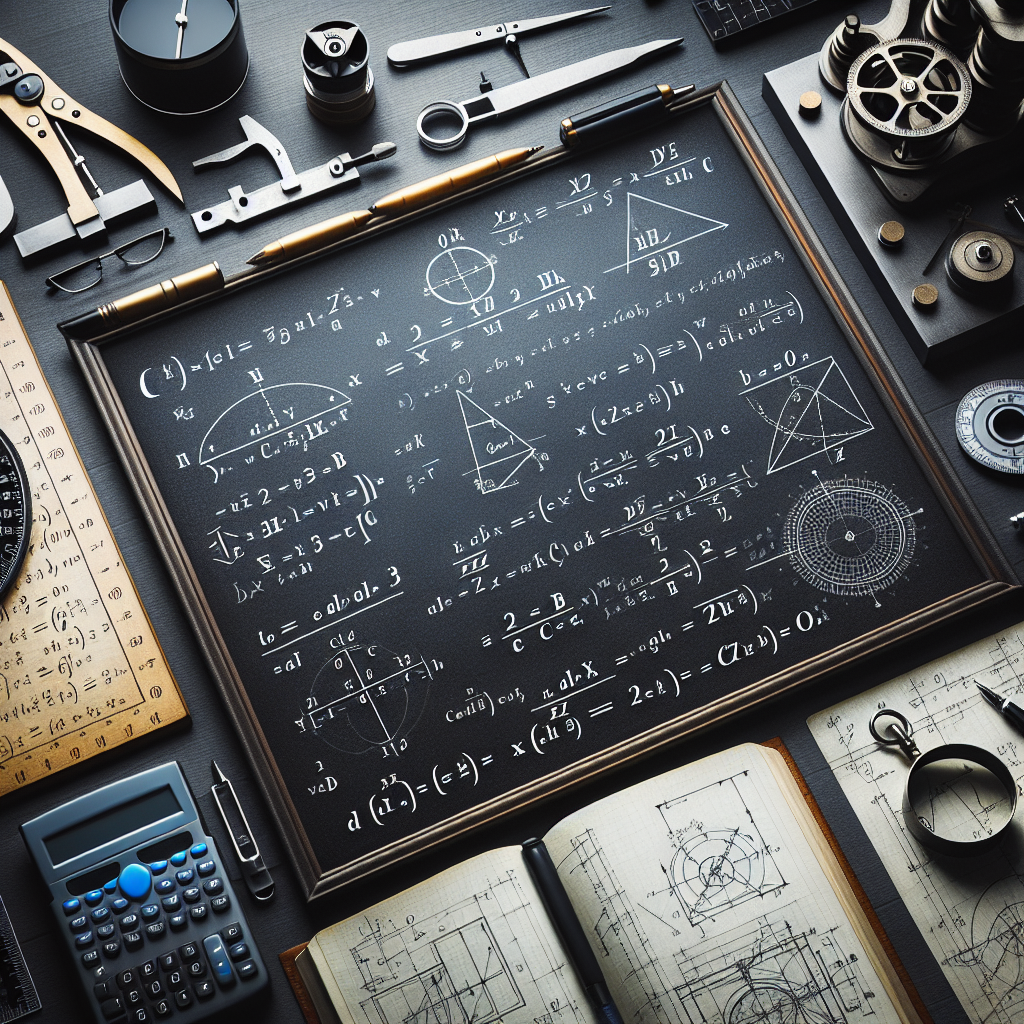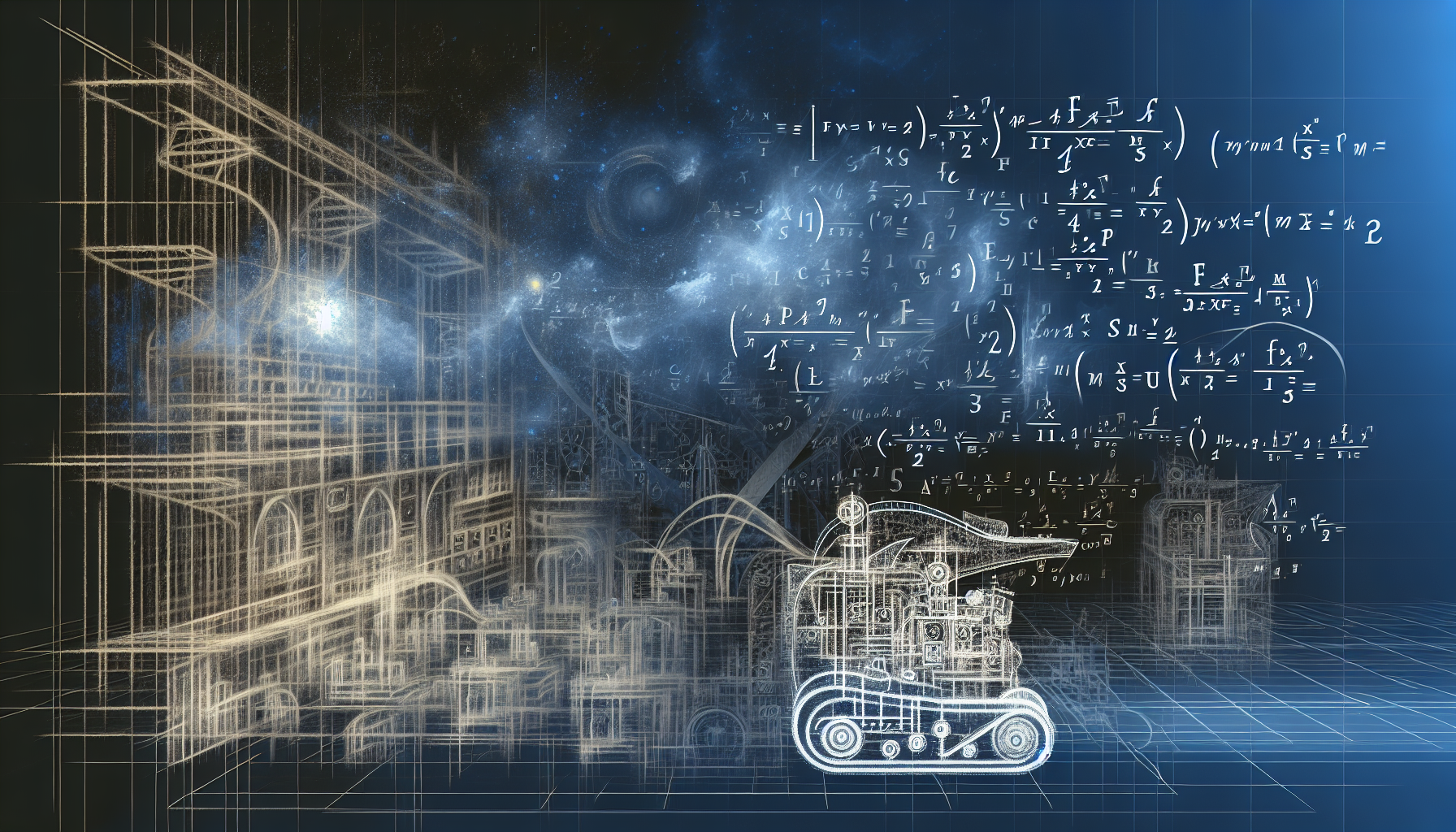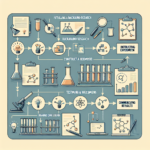
Mathematics serves as the cornerstone of engineering, providing essential frameworks for analysis, design, and optimization across various disciplines. Engineers utilize mathematical principles to solve complex problems, develop innovative solutions, and ensure the reliability and safety of structures and systems. The significance of mathematics in engineering cannot be overstated; it translates abstract concepts into practical applications that drive technological advancements and infrastructure development.
From civil engineering to electrical engineering, mathematical tools and techniques underpin the methodologies that professionals use to design and evaluate projects. For instance, calculus is essential in analyzing rates of change, which is critical for understanding motion, forces, and fluid dynamics. Algebraic equations help engineers model relationships between different variables, leading to accurate predictions and informed decision-making. Statistics and probability theory play vital roles in quality control and risk assessment, guiding engineers in managing uncertainties that come with projects.
Furthermore, the realm of engineering is continuously evolving, and the integration of advanced mathematical concepts such as differential equations and linear algebra has opened new avenues for innovation. With the rise of data-driven technologies, engineers increasingly leverage mathematical modeling and computational techniques to interpret vast amounts of data, further enhancing their problem-solving capabilities. Whether it’s designing a bridge, optimizing a manufacturing process, or developing software algorithms, mathematics is the unifying language that engineers employ to bring ideas to fruition.
As we delve deeper into the discussion of specific formulas and applications, it becomes clear that a solid understanding of mathematics is indispensable for successful engineering practice. This expertise allows engineers to not only address current challenges but also pioneer future advancements that can contribute to societal progress and sustainability.
Mathematics is the backbone of engineering, providing engineers with the tools required to solve complex problems effectively. Among the essential mathematical concepts utilized in engineering are algebra, calculus, statistics, and linear algebra. Each of these areas plays a significant role in various applications, demonstrating the necessity of a solid mathematical foundation for successful engineering practice.
Algebra forms the basis for solving equations that model engineering problems. Engineers frequently use algebraic expressions to analyze forces, material properties, and dynamic systems, allowing them to devise solutions to real-world issues. For instance, in structural engineering, engineers apply algebra to calculate load distributions in beams, identifying how factors such as width and height affect structural integrity.
Calculus, on the other hand, is vital for understanding changes and motion, making it indispensable in fields such as mechanical and civil engineering. Engineers rely on calculus to evaluate rates of change, which is crucial for modeling physical phenomena like fluid dynamics or material stress. The integral component of calculus helps engineers determine areas under curves, providing insights into quantities such as displacement and energy.
Statistics is another foundational concept, playing a crucial role in quality control and decision-making processes. Engineers apply statistical methods to analyze data from experiments and production processes, allowing them to draw meaningful conclusions and minimize errors. Reliability engineering often utilizes statistical analysis to predict product performance over time, ensuring safety and effectiveness in designs.
Lastly, linear algebra is integral to solving systems of equations and performing transformations, particularly in electrical and systems engineering. Engineers use matrices and vectors to represent and manipulate data effectively, aiding in the modeling of complex systems such as electrical circuits and mechanical frameworks. The application of linear algebra enhances problem-solving capabilities by streamlining computations and allowing for efficient representation of multidimensional data.
Engineering encompasses a diverse range of disciplines, each with its unique challenges and objectives. However, certain fundamental formulas serve as the backbone of various engineering fields, facilitating the analysis and resolution of complex problems. Understanding these essential formulas is paramount for engineers to apply theoretical principles to real-world applications.
One of the foundational equations in mechanics is Newton’s Second Law, which states that F = ma, where F represents force, m is mass, and a is acceleration. This formula is crucial when analyzing the motion of objects, allowing engineers to predict how forces will affect structures, vehicles, and machinery.
In the realm of thermodynamics, the First Law, expressed as ΔU = Q – W, plays a vital role. Here, ΔU is the change in internal energy, Q is the heat added to the system, and W is the work done by the system. This formula is essential for engineers designing engines or refrigeration systems, as it governs the conservation of energy.
Moving into fluid dynamics, the Bernoulli’s equation, given by P + 0.5ρv² + ρgh = constant, is fundamental in understanding fluid behavior. In this equation, P denotes pressure, ρ is fluid density, v is velocity, and h is height. Engineers utilize this formula extensively in designing pipelines, airfoils, and hydraulic systems.
In electrical engineering, Ohm’s Law (V = IR) becomes indispensable for analyzing circuit behavior. Here, V represents voltage, I is current, and R is resistance. This formula is crucial for ensuring optimal performance in electrical circuits, allowing engineers to design safe and efficient systems.
These key formulas offer an essential toolkit for engineers across various disciplines. Familiarity with these formulas not only aids in problem-solving but also enhances the ability to innovate and design effective solutions in their respective fields.

Calculus plays a pivotal role in engineering design processes, serving as a fundamental mathematical tool that facilitates problem-solving and optimization across various domains. In engineering, differentiation is often utilized to find maximum and minimum values, particularly in optimization problems where engineers must determine the most effective design parameters. For instance, in structural engineering, calculating the optimal dimensions of materials to maximize strength while minimizing weight is crucial. Here, calculus enables precise adjustments and predictions, ensuring that the design meets performance standards and safety regulations. By applying the principles of differentiation, engineers can derive rates of change and understand how alterations in one variable impact another, ultimately leading to improved design outcomes.
On the other hand, integration plays an essential role in engineering by providing methods to calculate areas, volumes, and quantities that are fundamental to design processes. For example, civil engineers frequently need to determine the volume of earth material for excavation or the surface area of complex structures for materials estimation. The process of integration allows for the computation of these integral values, yielding more accurate assessments of resources needed for construction projects. Moreover, integration is used in fluid dynamics to analyze flow rates and in thermodynamics to calculate energy over time. This capability underscores the importance of calculus as a versatile tool that enhances engineering practices across various fields.
In summary, the application of calculus in engineering design is instrumental in enhancing both the accuracy and efficiency of engineering solutions. By utilizing differentiation for optimization and integration for calculating essential quantities, engineers can design systems that are not only effective but also innovative. As engineering challenges become increasingly complex, the role of calculus remains vital in developing cutting-edge solutions that meet the demands of modern society.
Statistics plays a pivotal role in engineering, serving as a critical tool for decision-making and problem-solving across various disciplines. One of the primary applications of statistics within the engineering field is in quality control. Engineers utilize statistical methods, such as control charts and process capability analysis, to monitor manufacturing processes, ensuring that products meet established quality standards. By analyzing data collected from production, engineers can identify variations, detect issues early, and implement corrective actions, thereby minimizing waste and improving efficiency.
Another significant area where statistics is essential is in reliability engineering. Reliability engineering focuses on ensuring that products perform as expected over their intended lifespan. Statistical techniques such as life data analysis and failure mode effects analysis (FMEA) help engineers assess the reliability of components and systems. Through the application of probability distributions, engineers can predict failure rates and assess risks associated with various design choices. This quantitative approach enables firms to make informed decisions regarding design improvements, maintenance schedules, and safety measures.
Moreover, experimental design in engineering heavily relies on statistical principles to optimize the testing and evaluation of new products and processes. Engineers employ techniques like factorial designs and response surface methodology to systematically vary input factors and observe their effects on output performance. This not only enhances the learning process but also saves time and resources in product development. Practical examples include optimizing the manufacturing processes of aerospace components or refining the chemical formulations in materials engineering.
Incorporating statistical methods into engineering practices significantly enhances the ability to analyze data effectively, leading to more robust and reliable engineering solutions. By fostering a data-driven approach, engineers can make better decisions that ultimately improve product performance and safety in a constantly evolving technological landscape.
Linear algebra is a pivotal branch of mathematics that is frequently applied in various engineering disciplines, most notably in computer graphics, control theory, and systems of equations. Its central focus lies in the study of vectors, matrices, and the linear transformations that occur between them, providing engineers with essential tools for problem-solving and analysis. One of the most significant applications of linear algebra in engineering is the representation of systems of linear equations. These equations can model relationships and constraints in many engineering scenarios, enabling engineers to devise solutions for complex problems.
In computer graphics, linear algebra is foundational. Techniques involving transformations such as rotation, scaling, and translation of objects rely heavily on matrix operations. By representing graphics as vectors and utilizing matrices to manipulate these representations, engineers can create sophisticated visual effects and animations. Additionally, linear algebra aids in rendering techniques and image processing, demonstrating its vast applicability in technology and simulation.
Control theory, another essential area of engineering, benefits significantly from linear algebra, particularly through state-space representation and system stability analysis. Engineers use matrix equations to represent dynamic systems, allowing for the analysis of stability and performance. The identification of system parameters and modeling of complex interactions becomes feasible with the tools provided by linear algebra. This is crucial for designing control systems that can respond effectively to changes in their operating environment.
Furthermore, the significance of vector spaces in engineering analyses cannot be understated. They facilitate the conceptual framework for understanding multidimensional systems which are common in electrical engineering and robotics. The geometric interpretations that arise from linear algebra not only enhance visualization but also contribute to the development of innovative engineering solutions. Overall, the profound implications of linear algebra in various domains underscore its critical role in modern engineering.
Mathematical modeling plays a pivotal role in engineering, serving as a crucial tool for problem-solving across various disciplines. It involves the creation of abstract representations of real-world systems through mathematical expressions and equations. These models help engineers simulate behaviors and predict outcomes, thus facilitating informed decision-making in the design and analysis phases of engineering projects.
The process of creating a mathematical model consists of several key steps. Initially, the engineer must identify the real-world problem that requires investigation. This involves clearly defining the objectives and understanding the system’s constraints. Once the problem is delineated, the next step is to gather relevant data that will inform the model. This could involve empirical data collection, theoretical research, or a combination of both. The gathered data is then utilized to formulate mathematical equations that accurately represent the relationships among the system’s variables.
After the initial model is established, it may require validation. This step ensures that the model accurately reflects the real-world system it is intended to represent. Engineers often use statistical techniques to assess the model’s performance and to refine it as necessary. Once validated, mathematical models can be employed for simulations. These simulations enable engineers to analyze how changes in specific variables affect system performance, leading to optimized designs and solutions.
Moreover, mathematical modeling is integral in sectors such as civil, mechanical, and electrical engineering, where it aids in tasks ranging from structural analysis to circuit design. By employing these models, engineers can forecast potential challenges and make adjustments proactively, ultimately enhancing the efficiency and effectiveness of their projects. Through ongoing advancements in computational power, the complexity and accuracy of mathematical models continue to evolve, further solidifying their importance in the engineering field.

Mathematics serves as a vital tool in engineering, enabling practitioners to tackle complex problems with precision and efficiency. Among the effective problem-solving techniques utilized in engineering are dimensional analysis, estimation, and the employment of algorithms. Each of these strategies harnesses the power of mathematical principles to lead to successful resolutions in engineering projects.
Dimensional analysis is a fundamental method that involves checking the consistency of equations by examining the units involved. Engineers frequently employ this technique to simplify complex problems, ensuring that all terms in mathematical expressions match in dimensions. This can be particularly useful when converting measurements or deriving equations where units may not initially appear compatible. By strategically applying dimensional analysis, engineers can identify potential errors early in the process, thereby saving time and resources. It allows for a coherent examination of relationships between different physical quantities, ultimately facilitating a more streamlined approach to problem-solving.
Estimation, another critical mathematical strategy, allows engineers to make quick calculations that provide a ballpark solution when precise answers are not immediately necessary. For instance, during the initial phases of design, engineers rely on estimation techniques to assess costs, materials, and time commitments. By utilizing approximations and rounding, engineers can maintain a focus on overarching project objectives without getting bogged down by intricate details that may not alter the final outcome significantly. This approach can aid in decision-making processes where time constraints or limited information present themselves.
Moreover, algorithms play a crucial role in modern engineering problem-solving, especially in the era of computational technology. Engineers use algorithms to devise systematic methods for solving mathematical problems, thereby enabling them to analyze data sets efficiently and derive meaningful conclusions. By implementing algorithms, engineers can optimize designs, predict outcomes, and enhance problem-solving efficiency, ultimately improving project execution.
Utilizing these mathematical problem-solving techniques not only aids in achieving successful engineering outcomes but also fosters a culture of innovation and efficiency within the field.
The evolution of technology has dramatically transformed the landscape of engineering, primarily through the integration of advanced computational tools that leverage mathematical principles. These innovations have not only streamlined engineering processes but have also enhanced the accuracy and efficiency of simulations and analyses. In this context, the application of mathematics becomes indispensable, facilitating the resolution of intricate engineering challenges.
One significant advancement in this realm is the proliferation of software applications designed to conduct complex simulations. Programs such as MATLAB, ANSYS, and SolidWorks utilize mathematical algorithms to model physical systems, allowing engineers to predict behaviors under varying conditions. These tools depend on differential equations, linear algebra, and numerical methods that provide insights into structural integrity, fluid dynamics, and thermal performance. By employing these mathematical foundations, engineers can make data-driven decisions efficiently, ultimately leading to innovative solutions that resonate with real-world requirements.
Moreover, the development of numerical analysis methods has further fortified the role of mathematics in technology. Techniques like finite element analysis (FEA) and computational fluid dynamics (CFD) are heavily reliant on mathematical formulations. These methods allow engineers to approach problems in a segmented manner, breaking down complex structures into manageable elements while providing high accuracy in results. This not only enhances predictive capabilities but also aids in optimizing designs and processes in a cost-effective manner.
Additionally, advancements in data analytics and artificial intelligence are incorporating statistical mathematics, enabling predictive maintenance and performance optimization. By analyzing vast amounts of data, engineers can identify patterns and trends that were previously undetectable, significantly improving project outcomes. The intersection of mathematics with technology thus demonstrates a profound synergy, driving innovation within the engineering sector.
Mathematics serves as the backbone of engineering, providing essential tools for solving problems and optimizing systems. In civil engineering, for instance, the application of calculus and geometry is evident in bridge design. Engineers utilize mathematical equations to determine load distributions, ensuring safety and efficiency. The iconic Golden Gate Bridge exemplifies this, where intricate calculations allowed for the design of a structure that withstands significant forces while remaining aesthetically pleasing.
In the realm of mechanical engineering, principles of physics are intertwined with mathematical concepts. Consider the optimization of a jet engine flight path. Engineers apply differential equations to model airflow and predict performance under varying conditions. This mathematical modeling is crucial for enhancing fuel efficiency and maximizing thrust, ultimately leading to more environmentally friendly aircraft. The successful implementation of these calculations can be illustrated by the development of aircraft such as the Boeing 787, which leverages advanced mathematics for optimized aerodynamics.
Electrical engineering also significantly leverages mathematical applications, particularly in signal processing. Fourier transformations, which involve complex numbers and integrals, are essential in analyzing and interpreting signals. For example, telecommunications engineers employ these mathematical tools to send data over mobile networks. By transforming signals into different frequency components, they can effectively reduce noise and enhance the clarity of communication. The development of 5G technology showcases how intricately these mathematical principles have been integrated into everyday technology.
Thus, across various engineering disciplines, mathematics is not just an academic exercise; it is a vital part of the engineering process that enables innovation, efficiency, and safety. Understanding these applications allows engineers to create designs and solutions that are not only practical but also theoretically sound.
Enhancing mathematical skills is crucial for both engineering students and professionals, as these skills form the foundation for solving complex engineering problems. Here are several actionable tips to improve your mathematical proficiency effectively.
Firstly, establish a regular practice routine. Dedicate time each day to work through mathematical problems relevant to your specific engineering discipline. This consistent practice not only reinforces knowledge but also helps build confidence. Consider incorporating a variety of problem types such as calculus, algebra, and statistics to ensure a comprehensive understanding.
Secondly, utilize online resources that offer targeted learning in mathematics. Platforms like Khan Academy, Coursera, and edX provide courses specifically tailored to engineering mathematics. These resources often include video lectures, interactive exercises, and forums for discussion that can cater to different learning styles. Additionally, many universities offer free materials and lectures that can be invaluable for self-study.
Another effective strategy is to engage in collaborative study sessions with peers. Discussing mathematical concepts and problem-solving strategies with fellow engineering students can lead to a deeper understanding. Teaching others is also an excellent way to reinforce your own knowledge. Consider joining or forming study groups focused on various mathematical theories and their applications in engineering.
Lastly, focus on critical thinking exercises that are relevant to engineering applications. Problem-solving competitions, such as hackathons or mathematics contests, allow you to apply theories in practical scenarios, enhancing both your mathematical insight and engineering skills. This hands-on experience with real-world problems is invaluable for developing quick and analytical thinking.
By implementing these strategies, engineering students and professionals can significantly improve their mathematical skills, leading to greater competency in their respective fields.

The future of mathematics in engineering is poised to undergo significant evolution, especially with the rise of emerging technologies such as artificial intelligence (AI), robotics, and sustainable engineering practices. In the context of AI, mathematical algorithms are fundamental in machine learning models that power intelligent systems. The intricate calculations involved in data analysis, pattern recognition, and predictive modeling rely heavily on linear algebra, statistics, and calculus. As engineers integrate AI into their designs, a robust understanding of these mathematical foundations will become increasingly crucial.
Similarly, in robotics, advanced mathematics plays a vital role in kinematics and dynamics, essential for the development and control of robotic systems. Engineers must apply geometry and calculus to model robotic movements and optimize performance based on complex algorithms. The integration of mathematical principles not only enhances the functionality of robotic systems but also ensures that they operate safely and efficiently in diverse environments.
Furthermore, sustainable engineering is another field where mathematics is driving innovation. Models for energy efficiency, resource management, and environmental impact assessments require sophisticated mathematical frameworks. Techniques such as differential equations and optimization methods are pivotal in achieving sustainability goals. As the global emphasis on sustainability grows, future engineers will increasingly rely on mathematics to devise solutions that minimize ecological footprints while maximizing operational efficiency.
Emerging trends indicate a growing importance for engineers to be adept in advanced mathematics, including areas like numerical analysis and stochastic processes. The convergence of mathematics with engineering disciplines illustrates the profound influence mathematics will continue to exert on technology and society’s ability to address complex challenges. In the coming years, as engineering fields expand and evolve, the integration of mathematical concepts will be integral in shaping innovative, efficient, and sustainable engineering solutions.
Mathematics plays an indispensable role in the field of engineering, serving as the backbone of various disciplines that range from civil to mechanical engineering. Throughout this discussion, we have explored how mathematical principles and formulas underpin critical engineering processes, such as designing structures, analyzing forces, and optimizing systems. Engineers must possess a strong understanding of mathematical concepts to efficiently solve complex problems and apply theoretical knowledge to practical applications.
In our examination, we highlighted specific formulas, such as those related to calculus, algebra, and statistics, and demonstrated their relevance in real-world engineering scenarios. The application of these mathematical tools not only aids in achieving precise calculations but also fosters innovation by allowing engineers to model and simulate various conditions. It is through mathematics that engineers can understand patterns, make predictions, and ensure the reliability and safety of their designs.
The interplay between mathematics and engineering is evident in numerous advances that propel technology forward. As we navigate the challenges of modern engineering, from sustainable design to the development of smart technologies, the importance of mathematics continues to grow. The analytical skills developed through mathematical training enable engineers to address complex issues with effective solutions, thereby driving progress in various sectors.
In essence, mathematics serves as a fundamental pillar of engineering, influencing not only the design and execution of projects but also the overarching goals of innovation and efficiency. As we move into an increasingly technology-driven world, recognizing and appreciating the role that mathematics plays in engineering will be crucial for aspiring engineers and stakeholders alike. The future of engineering will undoubtedly continue to rely on the principles of mathematics, highlighting its significance as an essential tool in creating tomorrow’s groundbreaking solutions.
Looking to advertise, promote your brand, or explore partnership opportunities?
Reach out to us at
[email protected]







Chose where you want to study, and we will let you know with more updates.